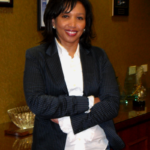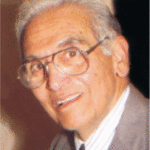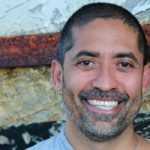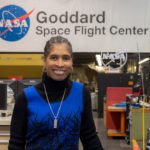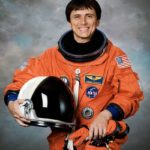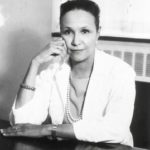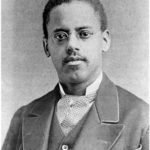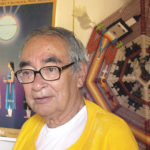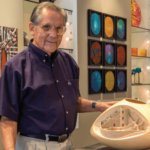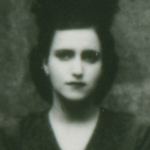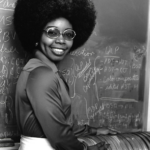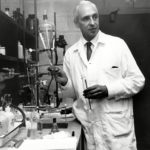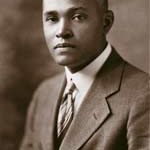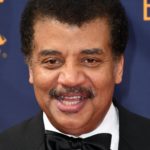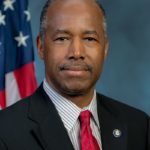This page servers to raise awareness and inspire STEM education and career advancement among underrepresented minorities. To do this I’ve chosen to highlight a few note worthy individuals who have all made great contributions to the STEM community. The list of individuals below is in no particular order and each person’s picture has a link to their biography, either on a government website or their Wikipedia page. Hopefully this list provides a source of inspiration for someone, and potentially opens up their mind to the seemingly limitless possibilities that a career in STEM may offer. If you would like the list to pause on a particular person click on the ‘circle’ below.
Alma Levant Hayden (Chemist)
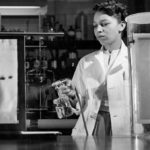 Alma Levant Hayden was an American chemist, and one of the first African-American women to gain a scientist position at a science agency in Washington, D.C. She joined the National Institutes of Health (NIH) in the 1950s. Hayden graduated from Howard University with a master’s degree in chemistry, and became an expert in spectrophotometry, the measurement of how substances absorb light. She published work on infrared and other techniques for analyzing chemicals in a range of journals. Hayden was appointed Chief of the Spectrophotometer Research Branch in the Division of Pharmaceutical Chemistry at the U.S. Food and Drug Administration (FDA) in 1963, and may have been the first African-American scientist at the FDA. Hayden came to national attention in 1963 when she led the team that exposed the common substance in Krebiozen, a long-controversial alternative and expensive drug promoted as anti-cancer.
Alma Levant Hayden was an American chemist, and one of the first African-American women to gain a scientist position at a science agency in Washington, D.C. She joined the National Institutes of Health (NIH) in the 1950s. Hayden graduated from Howard University with a master’s degree in chemistry, and became an expert in spectrophotometry, the measurement of how substances absorb light. She published work on infrared and other techniques for analyzing chemicals in a range of journals. Hayden was appointed Chief of the Spectrophotometer Research Branch in the Division of Pharmaceutical Chemistry at the U.S. Food and Drug Administration (FDA) in 1963, and may have been the first African-American scientist at the FDA. Hayden came to national attention in 1963 when she led the team that exposed the common substance in Krebiozen, a long-controversial alternative and expensive drug promoted as anti-cancer.
Mae Carol Jemison (Engineer, Physician, Astronaut)
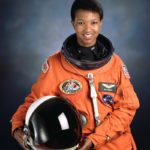 Mae Carol Jemison is an American engineer, physician, and former NASA astronaut. She became the first black woman to travel into space when she served as a mission specialist aboard the Space Shuttle Endeavour. Jemison joined NASA’s astronaut corps in 1987 and was selected to serve for the STS-47 mission, during which she orbited the Earth for nearly eight days on September 12–20, 1992.
Mae Carol Jemison is an American engineer, physician, and former NASA astronaut. She became the first black woman to travel into space when she served as a mission specialist aboard the Space Shuttle Endeavour. Jemison joined NASA’s astronaut corps in 1987 and was selected to serve for the STS-47 mission, during which she orbited the Earth for nearly eight days on September 12–20, 1992.
Born in Alabama and raised in Chicago, Jemison graduated from Stanford University with degrees in chemical engineering as well as African and African-American studies. She then earned her medical degree from Cornell University. Jemison was a doctor for the Peace Corps in Liberia and Sierra Leone from 1983 until 1985 and worked as a general practitioner. In pursuit of becoming an astronaut, she applied to NASA.
Jemison left NASA in 1993 and founded a technology research company. She later formed a non-profit educational foundation and through the foundation is the principal of the 100 Year Starship project funded by DARPA. Jemison also wrote several books for children and appeared on television several times, including in an episode of Star Trek: The Next Generation. She holds several honorary doctorates and has been inducted into the National Women’s Hall of Fame and the International Space Hall of Fame.
Janet Emerson Bashen (Inventor, Entrepreneur, Professional Consultant)
John C. Baez (Physicist, Educator)
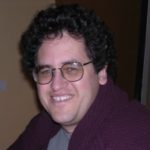 John C. Baez is an American mathematical physicist and a professor of mathematics at the University of California, Riverside (UCR) in Riverside, California. He has worked on spin foams in loop quantum gravity, applications of higher categories to physics, and applied category theory.
John C. Baez is an American mathematical physicist and a professor of mathematics at the University of California, Riverside (UCR) in Riverside, California. He has worked on spin foams in loop quantum gravity, applications of higher categories to physics, and applied category theory.
Baez is also the author of This Week’s Finds in Mathematical Physics, an irregular column on the internet featuring mathematical exposition and criticism. He started This Week’s Finds in 1993 for the Usenet community, and it now has a following in its new form, the blog “Azimuth”. This Week’s Finds anticipated the concept of a personal weblog. Additionally, Baez is known on the World Wide Web as the author of the crackpot index.
Mark Dean (Inventor, Engineer, Computer Scientist)
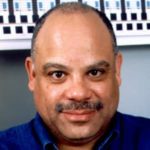 Mark Dean is an inventor and computer engineer. He was part of the team that developed the ISA bus, and he led a design team for making a one-gigahertz computer processor chip. He holds three of nine PC patents for being the co-creator of the IBM personal computer released in 1981. In August 2011, writing in his blog, Dean stated that he now uses a tablet computer instead of a PC.
Mark Dean is an inventor and computer engineer. He was part of the team that developed the ISA bus, and he led a design team for making a one-gigahertz computer processor chip. He holds three of nine PC patents for being the co-creator of the IBM personal computer released in 1981. In August 2011, writing in his blog, Dean stated that he now uses a tablet computer instead of a PC.
Ellen Ochoa (Engineer, Astronaut)
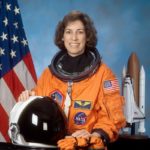 Ellen Ochoa is an American engineer, former astronaut and former director of the Johnson Space Center. In 1993 Ochoa became the first Hispanic woman to go to space when she served on a nine-day mission aboard the Space Shuttle Discovery. Ochoa became director of the center upon the retirement of the previous director, Michael Coats, on December 31, 2012. She was the first Hispanic director and the second female director of Johnson Space Center.
Ellen Ochoa is an American engineer, former astronaut and former director of the Johnson Space Center. In 1993 Ochoa became the first Hispanic woman to go to space when she served on a nine-day mission aboard the Space Shuttle Discovery. Ochoa became director of the center upon the retirement of the previous director, Michael Coats, on December 31, 2012. She was the first Hispanic director and the second female director of Johnson Space Center.
Lonnie Johnson (Aerospace Engineer, Inventor, Entrepreneur)
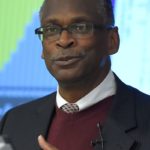 Lonnie Johnson is an American inventor, aerospace engineer, and entrepreneur, whose work history includes a U.S. Air Force term of service and a twelve-year stint at NASA, including the Jet Propulsion Laboratory. He invented the Super Soaker water gun in 1990, which has been among the world’s bestselling toys ever since.
Lonnie Johnson is an American inventor, aerospace engineer, and entrepreneur, whose work history includes a U.S. Air Force term of service and a twelve-year stint at NASA, including the Jet Propulsion Laboratory. He invented the Super Soaker water gun in 1990, which has been among the world’s bestselling toys ever since.
Albert Vinicio Báez (Physicist)
Alan Emtage (Computer Scientist)
Shirley Ann Jackson (Physicist)
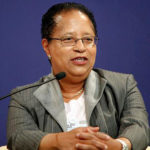 Shirley Ann Jackson is an American physicist, and the eighteenth president of Rensselaer Polytechnic Institute. She is the first African-American woman to have earned a doctorate at the Massachusetts Institute of Technology (MIT). She is also the second African-American woman in the United States to earn a doctorate in physics.
Shirley Ann Jackson is an American physicist, and the eighteenth president of Rensselaer Polytechnic Institute. She is the first African-American woman to have earned a doctorate at the Massachusetts Institute of Technology (MIT). She is also the second African-American woman in the United States to earn a doctorate in physics.
Aprille J. Ericsson-Jackson (Aerospace Engineer)
Guion Bluford (Aerospace Engineer)
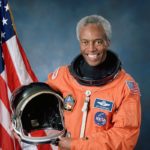 Guion Bluford is an American aerospace engineer, retired U.S. Air Force officer and fighter pilot, and former NASA astronaut, who is the first African American and the second person of African descent to go to space. Before becoming an astronaut, he was an officer in the U.S. Air Force, where he remained while assigned to NASA, rising to the rank of colonel. He participated in four Space Shuttle flights between 1983 and 1992. In 1983, as a member of the crew of the Orbiter Challenger on the mission STS-8, he became the first African American in space as well as the second person of African ancestry in space, after Cuban cosmonaut Arnaldo Tamayo Méndez.
Guion Bluford is an American aerospace engineer, retired U.S. Air Force officer and fighter pilot, and former NASA astronaut, who is the first African American and the second person of African descent to go to space. Before becoming an astronaut, he was an officer in the U.S. Air Force, where he remained while assigned to NASA, rising to the rank of colonel. He participated in four Space Shuttle flights between 1983 and 1992. In 1983, as a member of the crew of the Orbiter Challenger on the mission STS-8, he became the first African American in space as well as the second person of African ancestry in space, after Cuban cosmonaut Arnaldo Tamayo Méndez.
Katherine Johnson (Mathematician)
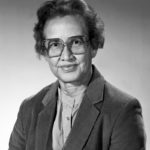 Katherine Johnson was an American mathematician whose calculations of orbital mechanics as a NASA employee were critical to the success of the first and subsequent U.S. crewed spaceflights. During her 35-year career at NASA and its predecessor, she earned a reputation for mastering complex manual calculations and helped pioneer the use of computers to perform the tasks. The space agency noted her “historical role as one of the first African-American women to work as a NASA scientist”.
Katherine Johnson was an American mathematician whose calculations of orbital mechanics as a NASA employee were critical to the success of the first and subsequent U.S. crewed spaceflights. During her 35-year career at NASA and its predecessor, she earned a reputation for mastering complex manual calculations and helped pioneer the use of computers to perform the tasks. The space agency noted her “historical role as one of the first African-American women to work as a NASA scientist”.
Julian Manly Earls (Physicist)
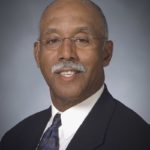 Julian Manly Earls is an American physicist who worked for NASA for over forty years. Earls became NASA’s first black section head, first black office chief, first black division chief, and first black deputy director. He has been awarded two NASA Exceptional Achievement Medals and was inducted into the Presidential Rank Award of the Senior Executive Service by both Bill Clinton and George Bush.
Julian Manly Earls is an American physicist who worked for NASA for over forty years. Earls became NASA’s first black section head, first black office chief, first black division chief, and first black deputy director. He has been awarded two NASA Exceptional Achievement Medals and was inducted into the Presidential Rank Award of the Senior Executive Service by both Bill Clinton and George Bush.
Luis Walter Alvarez (Physicist)
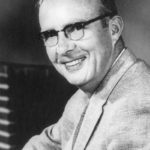 Luis Walter Alvarez was an American experimental physicist, inventor, and professor who was awarded the Nobel Prize in Physics in 1968 for development of the hydrogen bubble chamber enabling discovery of resonance states in particle physics. The American Journal of Physics commented, “Luis Alvarez was one of the most brilliant and productive experimental physicists of the twentieth century.”
Luis Walter Alvarez was an American experimental physicist, inventor, and professor who was awarded the Nobel Prize in Physics in 1968 for development of the hydrogen bubble chamber enabling discovery of resonance states in particle physics. The American Journal of Physics commented, “Luis Alvarez was one of the most brilliant and productive experimental physicists of the twentieth century.”
Franklin Chang-Díaz (Mechanical Engineer, Physicist, Astronaut)
Annie Easley (Computer Scientist, Mathematician, Rocket Scientist)
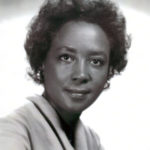 Annie Easley was an American computer scientist, mathematician, and rocket scientist. She worked for the Lewis Research Center (now Glenn Research Center) of the National Aeronautics and Space Administration (NASA) and its predecessor, the National Advisory Committee for Aeronautics (NACA). She was a leading member of the team which developed software for the Centaur rocket stage, and was one of the first African-Americans to work as a computer scientist at NASA.
Annie Easley was an American computer scientist, mathematician, and rocket scientist. She worked for the Lewis Research Center (now Glenn Research Center) of the National Aeronautics and Space Administration (NASA) and its predecessor, the National Advisory Committee for Aeronautics (NACA). She was a leading member of the team which developed software for the Centaur rocket stage, and was one of the first African-Americans to work as a computer scientist at NASA.
Daniel Hale Williams (Surgeon)
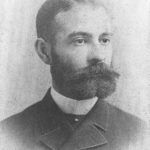 Daniel Hale Williams was an American general surgeon, who in 1893 performed the first documented, successful pericardium surgery in the United States to repair a wound. He founded Chicago’s Provident Hospital, the first non-segregated hospital in the United States and also founded an associated nursing school for African Americans.
Daniel Hale Williams was an American general surgeon, who in 1893 performed the first documented, successful pericardium surgery in the United States to repair a wound. He founded Chicago’s Provident Hospital, the first non-segregated hospital in the United States and also founded an associated nursing school for African Americans.
The heart surgery at Provident, which his patient survived for the next twenty years, is referred to as “the first successful heart surgery” by Encyclopedia Britannica. In 1913, Williams was elected as the only African-American charter member of the American College of Surgeons.
Patricia Bath (Ophthalmologist, Inventor, Humanitarian)
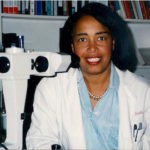 Patricia Bath was the first African-American person to serve as a resident in ophthalmology at New York University. She was also the first African-American woman to serve on staff as a surgeon at the UCLA Medical Center. Bath was the first African-American woman doctor to receive a patent for a medical purpose. The holder of five patents, she also founded the non-profit American Institute for the Prevention of Blindness in Washington, D.C.
Patricia Bath was the first African-American person to serve as a resident in ophthalmology at New York University. She was also the first African-American woman to serve on staff as a surgeon at the UCLA Medical Center. Bath was the first African-American woman doctor to receive a patent for a medical purpose. The holder of five patents, she also founded the non-profit American Institute for the Prevention of Blindness in Washington, D.C.
Jane C. Wright (Oncologist)
France Anne-Dominic Córdova (Astrophysicist, Administrator)
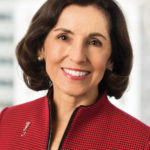 France Anne-Dominic Córdova is an American astrophysicist and administrator, who was the fourteenth director of the National Science Foundation. Previously, she was the eleventh President of Purdue University from 2007 to 2012. Córdova’s scientific contributions have been in the areas of observational and experimental astrophysics, multi-spectral research on x-ray and gamma ray sources and space-borne instrumentation. She has published more than 150 scientific papers. She was co-principal investigator for a telescope experiment that is currently flying on the satellite XMM-Newton, a cornerstone mission of the European Space Agency.
France Anne-Dominic Córdova is an American astrophysicist and administrator, who was the fourteenth director of the National Science Foundation. Previously, she was the eleventh President of Purdue University from 2007 to 2012. Córdova’s scientific contributions have been in the areas of observational and experimental astrophysics, multi-spectral research on x-ray and gamma ray sources and space-borne instrumentation. She has published more than 150 scientific papers. She was co-principal investigator for a telescope experiment that is currently flying on the satellite XMM-Newton, a cornerstone mission of the European Space Agency.
Walter Lincoln Hawkins (Chemist, Engineer)
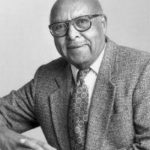 Walter Lincoln Hawkins was an American chemist and engineer widely regarded as a pioneer of polymer chemistry. For thirty-four years he worked at Bell Laboratories, where he was instrumental in designing a long-lasting plastic to sheath telephone cables, enabling the introduction of telephone services to thousands of Americans, especially those in rural communities. In addition to his pioneering research, Hawkins is also known for his advocacy efforts for minority students. He also served as the chairman of Montclair State University in 1973. Amongst his many awards, Hawkins was the first African-American to be elected to the National Academy of Engineering (1975), and, shortly before his death in 1992, he was awarded the National Medal of Technology by then-U.S. president, George H. W. Bush.
Walter Lincoln Hawkins was an American chemist and engineer widely regarded as a pioneer of polymer chemistry. For thirty-four years he worked at Bell Laboratories, where he was instrumental in designing a long-lasting plastic to sheath telephone cables, enabling the introduction of telephone services to thousands of Americans, especially those in rural communities. In addition to his pioneering research, Hawkins is also known for his advocacy efforts for minority students. He also served as the chairman of Montclair State University in 1973. Amongst his many awards, Hawkins was the first African-American to be elected to the National Academy of Engineering (1975), and, shortly before his death in 1992, he was awarded the National Medal of Technology by then-U.S. president, George H. W. Bush.
Juan Martín Maldacena (Physicist)
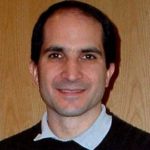 Juan Martín Maldacena is a theoretical physicist and the Carl P. Feinberg Professor in the School of Natural Sciences at the Institute for Advanced Study. He has made significant contributions to the foundations of string theory and quantum gravity. His most famous discovery is the AdS/CFT correspondence, a realization of the holographic principle in string theory.
Juan Martín Maldacena is a theoretical physicist and the Carl P. Feinberg Professor in the School of Natural Sciences at the Institute for Advanced Study. He has made significant contributions to the foundations of string theory and quantum gravity. His most famous discovery is the AdS/CFT correspondence, a realization of the holographic principle in string theory.
Lewis Howard Latimer (Inventor)
Garrett Morgan (Inventor, Businessman, Community Leader)
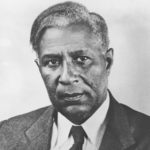 Garrett Morgan was an African-American inventor, businessman, and community leader. His most notable inventions were a three position traffic signal and a smoke hood (the first modern gas mask) notably used in a 1916 tunnel construction disaster rescue. Morgan also discovered and developed a chemical hair-processing and straightening solution. He created a successful company based on his hair product inventions along with a complete line of hair-care products, and became involved in the civic and political advancement of African-Americans, especially in and around Cleveland, Ohio.
Garrett Morgan was an African-American inventor, businessman, and community leader. His most notable inventions were a three position traffic signal and a smoke hood (the first modern gas mask) notably used in a 1916 tunnel construction disaster rescue. Morgan also discovered and developed a chemical hair-processing and straightening solution. He created a successful company based on his hair product inventions along with a complete line of hair-care products, and became involved in the civic and political advancement of African-Americans, especially in and around Cleveland, Ohio.
Mary G. Ross (Engineer)
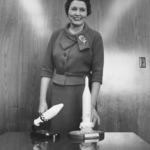 Mary G. Ross was the first known Native American female engineer, and the first female engineer in the history of Lockheed. She was one of the 40 founding engineers of the renowned and highly secretive Skunk Works project at Lockheed Corporation. She worked at Lockheed from 1942 until her retirement in 1973, where she was best remembered for her work on aerospace design – including the Agena Rocket program – as well as numerous “design concepts for interplanetary space travel, crewed and uncrewed Earth-orbiting flights, the earliest studies of orbiting satellites for both defense and civilian purposes.” In 2018, she was chosen to be depicted on the 2019 Native American $1 Coin by the U.S. Mint celebrating American Indians in the space program.
Mary G. Ross was the first known Native American female engineer, and the first female engineer in the history of Lockheed. She was one of the 40 founding engineers of the renowned and highly secretive Skunk Works project at Lockheed Corporation. She worked at Lockheed from 1942 until her retirement in 1973, where she was best remembered for her work on aerospace design – including the Agena Rocket program – as well as numerous “design concepts for interplanetary space travel, crewed and uncrewed Earth-orbiting flights, the earliest studies of orbiting satellites for both defense and civilian purposes.” In 2018, she was chosen to be depicted on the 2019 Native American $1 Coin by the U.S. Mint celebrating American Indians in the space program.
Fred Begay, also Fred Young or Clever Fox (Nuclear Physicist)
Lori Alvord (Surgeon)
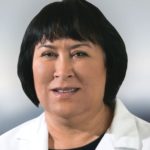 Lori Alvord is an American surgeon and author. She is perhaps best known for being the first Diné woman to ever become board certified in surgery. Her autobiography, The Scalpel and the Silver Bear, has brought increased attention to her career as a surgeon and has sold over 50,000 copies. Dr. Alvord was also nominated to serve as the U.S. Surgeon General in 2013. Dr. Alvord uses new techniques that bring together Navajo healing techniques and modern Western Medicine.
Lori Alvord is an American surgeon and author. She is perhaps best known for being the first Diné woman to ever become board certified in surgery. Her autobiography, The Scalpel and the Silver Bear, has brought increased attention to her career as a surgeon and has sold over 50,000 copies. Dr. Alvord was also nominated to serve as the U.S. Surgeon General in 2013. Dr. Alvord uses new techniques that bring together Navajo healing techniques and modern Western Medicine.
Henry Aaron Hill (Chemist)
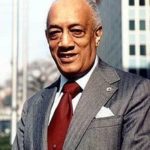 Henry Aaron Hill was an American fluorocarbon chemist who became the first African American president of the American Chemical Society (ACS).
Henry Aaron Hill was an American fluorocarbon chemist who became the first African American president of the American Chemical Society (ACS).
He graduated from Johnson C. Smith University in Charlotte, North Carolina, with a Bachelor of Arts degree in 1936, before completing a Ph.D. from Massachusetts Institute of Technology in Cambridge, Massachusetts, 1942. The title of his dissertation is “Test of Van’t Hoff’s Principle of Optical Superposition.”
After receiving his Ph.D., Hill joined Atlantic Research Associates in Newtonville, Massachusetts, as a research chemist. He became research director there and became vice president in 1944. Hill was a civilian employee of the Office of Scientific Research and Development in 1944. In 1946, Hill moved to Dewey & Almy Chemical Co. in Cambridge, Massachusetts, as a research group leader. In 1952, he became assistant manager and co-founder of National Polychemicals, Inc., of Wilmington, Massachusetts. Hill founded Riverside Laboratory in 1961 for research, development, and consulting.
Hill’s research focused on chemical intermediates for the production of polymer products.
Kathleen R. Johnson (Geologist, Paleoclimatologist)
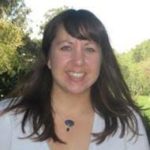 Kathleen R. Johnson is an American geologist and paleoclimatologist of indigenous descent (she is a member of the Grand Traverse Band of Ottawa and Chippewa Indians). Her research focuses on reconstructing past climate change with speleothems, on active cave monitoring to understand the interaction of climate with speleotherm geochemistry, and analyzes climate and paleoclimate data to investigate natural climate variability. She earned a PhD from the University of California Berkeley in 2004 and is an Associate Professor at the University of California Irvine.
Kathleen R. Johnson is an American geologist and paleoclimatologist of indigenous descent (she is a member of the Grand Traverse Band of Ottawa and Chippewa Indians). Her research focuses on reconstructing past climate change with speleothems, on active cave monitoring to understand the interaction of climate with speleotherm geochemistry, and analyzes climate and paleoclimate data to investigate natural climate variability. She earned a PhD from the University of California Berkeley in 2004 and is an Associate Professor at the University of California Irvine.
J. Ernest Wilkins Jr. (Mechanical Engineer, Mathematician)
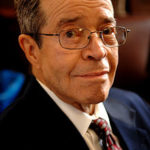 J. Ernest Wilkins Jr. was an African American nuclear scientist, mechanical engineer and mathematician. He attended the University of Chicago at the age of 13, becoming its youngest ever student. His intelligence led to him being referred to as a “negro genius” in the media.
J. Ernest Wilkins Jr. was an African American nuclear scientist, mechanical engineer and mathematician. He attended the University of Chicago at the age of 13, becoming its youngest ever student. His intelligence led to him being referred to as a “negro genius” in the media.
As part of a widely varied and notable career, Wilkins contributed to the Manhattan Project during the Second World War. He also gained fame working in and conducting nuclear physics research in both academia and industry. He wrote numerous scientific papers, served in various important posts, earned several significant awards and helped recruit minority students into the sciences. His career spanned seven decades and included significant contributions to pure and applied mathematics, civil and nuclear engineering, and optics.
Despite his stature and fame during his various careers he was often the target of unchecked racism.
James Andrew Harris (Chemist)
Alfred H. Qöyawayma (Engineer, Sculptor)
Helen Rodríguez Trías (Pediatrician, Educator, Activist)
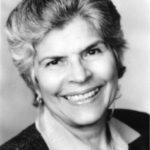 Helen Rodríguez Trías was a pediatrician, educator and women’s rights activist. She was the first Latina president of the American Public Health Association (APHA), a founding member of the Women’s Caucus of the APHA, and a recipient of the Presidential Citizens Medal. She is credited with helping to expand the range of public health services for women and children in minority and low-income populations around the world.
Helen Rodríguez Trías was a pediatrician, educator and women’s rights activist. She was the first Latina president of the American Public Health Association (APHA), a founding member of the Women’s Caucus of the APHA, and a recipient of the Presidential Citizens Medal. She is credited with helping to expand the range of public health services for women and children in minority and low-income populations around the world.
Ted Taylor (Physicist)
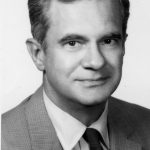 Ted Taylor was an American theoretical physicist, specifically concerning nuclear energy. His higher education includes a PhD from Cornell University in theoretical physics. Although Taylor is relatively unknown to the public, his most noteworthy contributions to the field of nuclear weaponry were his small bomb developments at the Los Alamos Laboratory in New Mexico. He is credited with numerous landmarks in fission nuclear weaponry development, including having developed the smallest, most powerful, and most efficient fission weapons ever tested by the US. Though Taylor was not considered a brilliant physicist from a calculative viewpoint, his vision and creativity allowed him to thrive in the field. The later part of Taylor’s career was focused on nuclear energy instead of weaponry, and included his work on Project Orion, nuclear reactor developments, and anti-nuclear proliferation.
Ted Taylor was an American theoretical physicist, specifically concerning nuclear energy. His higher education includes a PhD from Cornell University in theoretical physics. Although Taylor is relatively unknown to the public, his most noteworthy contributions to the field of nuclear weaponry were his small bomb developments at the Los Alamos Laboratory in New Mexico. He is credited with numerous landmarks in fission nuclear weaponry development, including having developed the smallest, most powerful, and most efficient fission weapons ever tested by the US. Though Taylor was not considered a brilliant physicist from a calculative viewpoint, his vision and creativity allowed him to thrive in the field. The later part of Taylor’s career was focused on nuclear energy instead of weaponry, and included his work on Project Orion, nuclear reactor developments, and anti-nuclear proliferation.
George Washington Carver (Scientist, Inventor)
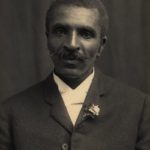 George Washington Carver was an American agricultural scientist and inventor. He promoted alternative crops to cotton and methods to prevent soil depletion. He was the most prominent black scientist of the early 20th century.
George Washington Carver was an American agricultural scientist and inventor. He promoted alternative crops to cotton and methods to prevent soil depletion. He was the most prominent black scientist of the early 20th century.
While a professor at Tuskegee Institute, Carver developed techniques to improve soils depleted by repeated plantings of cotton. He wanted poor farmers to grow other crops, such as peanuts and sweet potatoes, as a source of their own food and to improve their quality of life. The most popular of his 44 practical bulletins for farmers contained 105 food recipes using peanuts. Although he spent years developing and promoting numerous products made from peanuts, none became commercially successful.
Apart from his work to improve the lives of farmers, Carver was also a leader in promoting environmentalism. He received numerous honors for his work, including the Spingarn Medal of the NAACP. In an era of high racial polarization, his fame reached beyond the black community. He was widely recognized and praised in the white community for his many achievements and talents. In 1941, Time magazine dubbed Carver a “Black Leonardo”.
Clarence Ellis (Computer Scientist, Professor)
 Clarence Ellis was an American computer scientist, and Emeritus Professor of Computer Science and Cognitive Science at the University of Colorado at Boulder. While at the CU-Boulder, he was the director of the Collaboration Technology Research Group and a member of the Institute of Cognitive Science. Ellis was the first African-American to earn a Ph.D. in Computer Science (1969), and the first African-American to be elected a Fellow of the ACM (1997). Ellis was a pioneer in Computer Supported Cooperative Work (CSCW) and Groupware. He and his team at Xerox PARC created OfficeTalk, one of the first groupware systems. Ellis also pioneered Operational Transformation, which is a set of techniques that enables real-time collaborative editing of documents.
Clarence Ellis was an American computer scientist, and Emeritus Professor of Computer Science and Cognitive Science at the University of Colorado at Boulder. While at the CU-Boulder, he was the director of the Collaboration Technology Research Group and a member of the Institute of Cognitive Science. Ellis was the first African-American to earn a Ph.D. in Computer Science (1969), and the first African-American to be elected a Fellow of the ACM (1997). Ellis was a pioneer in Computer Supported Cooperative Work (CSCW) and Groupware. He and his team at Xerox PARC created OfficeTalk, one of the first groupware systems. Ellis also pioneered Operational Transformation, which is a set of techniques that enables real-time collaborative editing of documents.
Alexa Canady (Neurosurgeon)
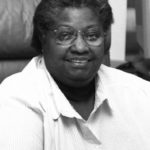 Alexa Canady is a retired American medical doctor specializing in neurosurgery. She was born in Lansing, Michigan and earned both her bachelors and medical degree from the University of Michigan. After completing her residency at the University of Minnesota in 1981, she became the first black woman to become a neurosurgeon.
Alexa Canady is a retired American medical doctor specializing in neurosurgery. She was born in Lansing, Michigan and earned both her bachelors and medical degree from the University of Michigan. After completing her residency at the University of Minnesota in 1981, she became the first black woman to become a neurosurgeon.
Canady specialized in pediatric neurosurgery and was the chief of neurosurgery at the Children’s Hospital in Michigan from 1987 until her partial retirement in 2001. In addition to surgery, she also conducted research and was a professor of neurosurgery at Wayne State University. After her retirement, she moved to Florida and maintained a part-time practice at Pensacola’s Sacred Heart Hospital until her full retirement in January 2012. In 1989, Canady was inducted into the Michigan Women’s Hall of Fame, and in 1993 she also received the American Medical Women’s Association President’s Award. Dr. Canady was known amongst her peers as a patient-focused surgeon who cared deeply about each of her patients.
Antonia Novello (Physician, Public Health Administrator)
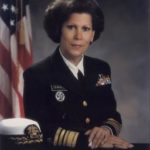 Antonia Novello is a Puerto Rican physician and public health administrator. She was a vice admiral in the Public Health Service Commissioned Corps and served as 14th Surgeon General of the United States from 1990 to 1993. Novello was the first woman, first person of color, and first Hispanic to serve as Surgeon General. Novello also served as Commissioner of Health for the State of New York from 1999 to 2006.
Antonia Novello is a Puerto Rican physician and public health administrator. She was a vice admiral in the Public Health Service Commissioned Corps and served as 14th Surgeon General of the United States from 1990 to 1993. Novello was the first woman, first person of color, and first Hispanic to serve as Surgeon General. Novello also served as Commissioner of Health for the State of New York from 1999 to 2006.
Minnie Joycelyn Elders (Physician, Public Health Administrator)
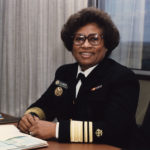 Minnie Joycelyn Elders is an American pediatrician and public health administrator who served as Surgeon General of the United States from 1993 to 1994. A vice admiral in the Public Health Service Commissioned Corps, she was the second woman, second person of color, and first African American to serve as Surgeon General.
Minnie Joycelyn Elders is an American pediatrician and public health administrator who served as Surgeon General of the United States from 1993 to 1994. A vice admiral in the Public Health Service Commissioned Corps, she was the second woman, second person of color, and first African American to serve as Surgeon General.
Dorothy Vaughan (Mathematician, Human Computer)
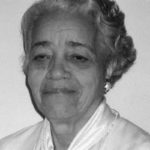 Dorothy Vaughan was an American mathematician and human computer who worked for the National Advisory Committee for Aeronautics (NACA), and NASA, at Langley Research Center in Hampton, Virginia. In 1949, she became acting supervisor of the West Area Computers, the first African-American woman to supervise a group of staff at the center.
Dorothy Vaughan was an American mathematician and human computer who worked for the National Advisory Committee for Aeronautics (NACA), and NASA, at Langley Research Center in Hampton, Virginia. In 1949, she became acting supervisor of the West Area Computers, the first African-American woman to supervise a group of staff at the center.
Lydia Villa-Komaroff (Biologist, Administrator, Business Woman)
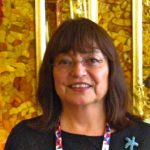 Lydia Villa-Komaroff is a molecular and cellular biologist who has been an academic laboratory scientist, a university administrator, and a business woman. She was the third Mexican American woman in the United States to receive a doctorate degree in the sciences (1975) and is a co-founding member of The Society for the Advancement of Chicanos/Hispanics and Native Americans in Science (SACNAS). Her most notable discovery was in 1978 during her post-doctoral research, when she was part of a team that discovered how bacterial cells could be used to generate insulin.
Lydia Villa-Komaroff is a molecular and cellular biologist who has been an academic laboratory scientist, a university administrator, and a business woman. She was the third Mexican American woman in the United States to receive a doctorate degree in the sciences (1975) and is a co-founding member of The Society for the Advancement of Chicanos/Hispanics and Native Americans in Science (SACNAS). Her most notable discovery was in 1978 during her post-doctoral research, when she was part of a team that discovered how bacterial cells could be used to generate insulin.
Percy Lavon Julian (Chemist)
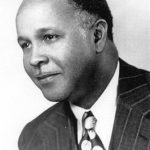 Percy Lavon Julian was an American research chemist and a pioneer in the chemical synthesis of medicinal drugs from plants. He was the first to synthesize the natural product physostigmine, plus a pioneer in the industrial large-scale chemical synthesis of the human hormones progesterone and testosterone from plant sterols such as stigmasterol and sitosterol. His work laid the foundation for the steroid drug industry’s production of cortisone, other corticosteroids, and birth control pills.
Percy Lavon Julian was an American research chemist and a pioneer in the chemical synthesis of medicinal drugs from plants. He was the first to synthesize the natural product physostigmine, plus a pioneer in the industrial large-scale chemical synthesis of the human hormones progesterone and testosterone from plant sterols such as stigmasterol and sitosterol. His work laid the foundation for the steroid drug industry’s production of cortisone, other corticosteroids, and birth control pills.
Enriqueta González Baz y de la Vega (Mathematician)
Ruth Ella Moore (Bacteriologist)
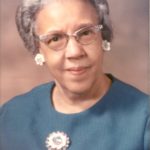 Ruth Ella Moore was a bacteriologist, who in 1933 became the first African-American woman to gain a PhD in a natural science. She was a professor and head of the Department of Bacteriology at Howard University, publishing work on tuberculosis, immunology and dental caries, the response of gut microorganisms to antibiotics, and the blood type of African-Americans.
Ruth Ella Moore was a bacteriologist, who in 1933 became the first African-American woman to gain a PhD in a natural science. She was a professor and head of the Department of Bacteriology at Howard University, publishing work on tuberculosis, immunology and dental caries, the response of gut microorganisms to antibiotics, and the blood type of African-Americans.
Granville Tailer Woods (Engineer, Inventor)
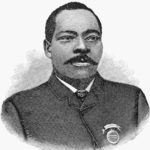 Granville Tailer Woods was an inventor who held more than 60 patents in the U.S. He was the first African American mechanical and electrical engineer after the Civil War. Self-taught, he concentrated most of his work on trains and streetcars. One of his notable inventions was a device he called the Synchronous Multiplex Railway Telegraph, a variation of induction telegraph which relied on ambient static electricity from existing telegraph lines to send messages between train stations and moving trains. His work assured a safer and better public transportation system for the cities of the United States.
Granville Tailer Woods was an inventor who held more than 60 patents in the U.S. He was the first African American mechanical and electrical engineer after the Civil War. Self-taught, he concentrated most of his work on trains and streetcars. One of his notable inventions was a device he called the Synchronous Multiplex Railway Telegraph, a variation of induction telegraph which relied on ambient static electricity from existing telegraph lines to send messages between train stations and moving trains. His work assured a safer and better public transportation system for the cities of the United States.
Valerie L. Thomas (Scientist, Inventor)
Lloyd Noel Ferguson (Chemist)
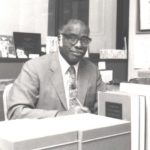 Lloyd Noel Ferguson was an American chemist. As a child in Oakland, California, Ferguson had a backyard laboratory in which he developed a moth repellent, a silverware cleanser, and a lemonade powder. He graduated from Oakland Technical High School in 1934 at the age of 16. After working in construction and as a railway porter in order to earn enough money to pay for college, he did his undergraduate studies at the University of California, Berkeley and received a Ph.D. from the same university in 1943, the first African American to earn a chemistry Ph.D. there. During his time at Berkeley, Ferguson worked with Melvin Calvin on the synthesis of Schiff base ligands used to form transition metal complexes that mimic the oxygen-carrying ability of biological proteins.
Lloyd Noel Ferguson was an American chemist. As a child in Oakland, California, Ferguson had a backyard laboratory in which he developed a moth repellent, a silverware cleanser, and a lemonade powder. He graduated from Oakland Technical High School in 1934 at the age of 16. After working in construction and as a railway porter in order to earn enough money to pay for college, he did his undergraduate studies at the University of California, Berkeley and received a Ph.D. from the same university in 1943, the first African American to earn a chemistry Ph.D. there. During his time at Berkeley, Ferguson worked with Melvin Calvin on the synthesis of Schiff base ligands used to form transition metal complexes that mimic the oxygen-carrying ability of biological proteins.
Richard A. Tapia (Mathematician)
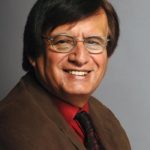 Richard A. Tapia is an American mathematician and champion of under-represented minorities in the sciences. In recognition of his broad contributions, in 2005, Tapia was named “University Professor” at Rice University in Houston, Texas, the University’s highest academic title. The honor has been bestowed on only six professors in Rice’s one-hundred-five-year history. On September 28, 2011, President Barack Obama announced that Tapia was among twelve scientists to be awarded the National Medal of Science, the top award the United States offers its researchers. Tapia is currently the Maxfield and Oshman Professor of Engineering; Associate Director of Graduate Studies, Office of Research and Graduate Studies; and Director of the Center for Excellence and Equity in Education at Rice University.
Richard A. Tapia is an American mathematician and champion of under-represented minorities in the sciences. In recognition of his broad contributions, in 2005, Tapia was named “University Professor” at Rice University in Houston, Texas, the University’s highest academic title. The honor has been bestowed on only six professors in Rice’s one-hundred-five-year history. On September 28, 2011, President Barack Obama announced that Tapia was among twelve scientists to be awarded the National Medal of Science, the top award the United States offers its researchers. Tapia is currently the Maxfield and Oshman Professor of Engineering; Associate Director of Graduate Studies, Office of Research and Graduate Studies; and Director of the Center for Excellence and Equity in Education at Rice University.
Tapia’s mathematical research is focused on mathematical optimization and iterative methods for nonlinear problems. His current research is in the area of algorithms for constrained optimization and interior point methods for linear and nonlinear programming.
Tapia is also a founding member of the Society for the Advancement of Chicanos and Native Americans in Science (SACNAS).
Bettye Washington Greene (Chemist)
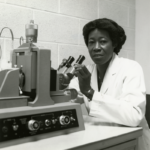 Bettye Washington Greene was an American industrial research chemist. She was the first African American female Ph.D. chemist to work in a professional position at the Dow Chemical Company. At Dow, she researched latex and polymers. Dr. Greene is considered an early African American pioneer in science.
Bettye Washington Greene was an American industrial research chemist. She was the first African American female Ph.D. chemist to work in a professional position at the Dow Chemical Company. At Dow, she researched latex and polymers. Dr. Greene is considered an early African American pioneer in science.
Robert Henry Lawrence Jr. (Astronaut)
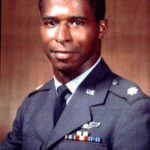 Robert Henry Lawrence Jr. was a United States Air Force officer and the first African-American astronaut. As an astronaut he worked on low-orbit intelligence missions which also happened to be the precursor for NASA’s space shuttle program. At that time Robert Henry Lawrence Jr. was the the only selected MOL astronaut with a doctorate in physical chemistry.
Robert Henry Lawrence Jr. was a United States Air Force officer and the first African-American astronaut. As an astronaut he worked on low-orbit intelligence missions which also happened to be the precursor for NASA’s space shuttle program. At that time Robert Henry Lawrence Jr. was the the only selected MOL astronaut with a doctorate in physical chemistry.
Samuel P. Massie (Chemist)
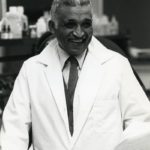 Samuel P. Massie was a chemist who studied a variety of chemicals that contributed towards the development of therapeutic drugs, including the chemistry of phenothiazine, and he worked uranium isotopes for the Manhattan Project to develop atomic bombs in World War II. He was elected as the third President of North Carolina College at Durham in 1963, and he was the first African-American professor at the U.S. Naval Academy. Massie was named one of the top 75 distinguished contributors to chemistry in history by Chemical and Engineering News. He was a leading educator who promoted the participation of African-Americans in education. University chairs have been endowed and named in his honor, as well as an elementary school.
Samuel P. Massie was a chemist who studied a variety of chemicals that contributed towards the development of therapeutic drugs, including the chemistry of phenothiazine, and he worked uranium isotopes for the Manhattan Project to develop atomic bombs in World War II. He was elected as the third President of North Carolina College at Durham in 1963, and he was the first African-American professor at the U.S. Naval Academy. Massie was named one of the top 75 distinguished contributors to chemistry in history by Chemical and Engineering News. He was a leading educator who promoted the participation of African-Americans in education. University chairs have been endowed and named in his honor, as well as an elementary school.
Severo Ochoa (Physician, Biochemist)
Carlos I. Noriega (Astronaut)
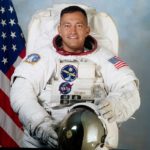 Carlos I. Noriega is a Peruvian and U.S. citizen, NASA employee, a former NASA astronaut and a retired U.S. Marine Corps lieutenant colonel.
Carlos I. Noriega is a Peruvian and U.S. citizen, NASA employee, a former NASA astronaut and a retired U.S. Marine Corps lieutenant colonel.
Noriega Graduated from Wilcox High School, Santa Clara, California, in 1977 and earned Bachelor of Science degree in computer science from the University of Southern California in 1981. He went on to earn a Master of Science degree in computer science and Master of Science degree in space systems operations from the Naval Postgraduate School, 1990.
Noriega also earned the following special honors: Defense Superior Service Medal,two Defense Meritorious Service Medals, Air Medal with Combat Distinguishing Device, Air Medal (Strike Flight Award), Navy and Marine Corps Achievement Medal, two NASA Space Flight Medals and theNASA Exceptional Service Medal
St. Elmo Brady (Chemist)
Neil deGrasse Tyson (Astrophysicist, Cosmologist, Planetary Scientist, Author, Science Communicator)
Neil deGrasse Tyson is an American astrophysicist, cosmologist, planetary scientist, author, and science communicator.
Since 1996, he has been the Frederick P. Rose Director of the Hayden Planetarium at the Rose Center for Earth and Space in New York City. The center is part of the American Museum of Natural History, where Tyson founded the Department of Astrophysics in 1997 and has been a research associate in the department since 2003.
Tyson studied at Harvard University, the University of Texas at Austin, and Columbia University. From 1991 to 1994, he was a postdoctoral research associate at Princeton University. In 1994, he joined the Hayden Planetarium as a staff scientist and the Princeton faculty as a visiting research scientist and lecturer. In 1996, he became director of the planetarium and oversaw its $210 million reconstruction project, which was completed in 2000.
From 1995 to 2005, Tyson wrote monthly essays in the “Universe” column for Natural History magazine, some of which were later published in his books Death by Black Hole (2007) and Astrophysics for People in a Hurry (2017). During the same period, he wrote a monthly column in StarDate magazine, answering questions about the universe under the pen name “Merlin”. Material from the column appeared in his books Merlin’s Tour of the Universe (1998) and Just Visiting This Planet (1998). Tyson served on a 2001 government commission on the future of the U.S. aerospace industry and on the 2004 Moon, Mars and Beyond commission. He was awarded the NASA Distinguished Public Service Medal in the same year. From 2006 to 2011, he hosted the television show NOVA ScienceNow on PBS. Since 2009, Tyson has hosted the weekly podcast StarTalk. A spin-off, also called StarTalk, began airing on National Geographic in 2015. In 2014, he hosted the television series Cosmos: A Spacetime Odyssey, a successor to Carl Sagan’s 1980 series Cosmos: A Personal Voyage. The U.S. National Academy of Sciences awarded Tyson the Public Welfare Medal in 2015 for his “extraordinary role in exciting the public about the wonders of science”.
Ben Carson (Politician, Public Servant, Author, and Retired Neurosurgeon)
Ben Carson is an American politician, public servant, author, and retired neurosurgeon who has served as the 17th United States Secretary of Housing and Urban Development since 2017. He was a candidate for President of the United States in the Republican primaries in 2016, at times leading nationwide polls of Republicans. He is considered a pioneer in the field of neurosurgery.
Carson became the Director of Pediatric Neurosurgery at the Johns Hopkins Children’s Center in 1984 at age 33; he was the youngest chief of pediatric neurosurgery in the United States. He was also a professor of Neurosurgery, Oncology, Plastic Surgery, and Pediatrics at the Johns Hopkins School of Medicine. Carson’s achievements include performing the only successful separation of conjoined twins joined at the back of the head; performing the first successful neurosurgical procedure on a fetus inside the womb; performing the first completely successful separation of type-2 vertical craniopagus twins; developing new methods to treat brain-stem tumors; and revitalizing hemispherectomy techniques for controlling seizures. He wrote over 100 neurosurgical publications. He retired from medicine in 2013.
Carson has received numerous honors for his neurosurgery work, including more than 60 honorary doctorate degrees and numerous national merit citations. In 2001, he was named by CNN and TIME magazine as one of the nation’s 20 foremost physicians and scientists, and was selected by the Library of Congress as one of 89 “Living Legends” on its 200th anniversary. In 2008, Carson was bestowed the Presidential Medal of Freedom, the highest civilian award in the United States. In 2010, he was elected into the National Academy of Medicine. He was the subject of the 2009 TV film Gifted Hands: The Ben Carson Story, where he was portrayed by Cuba Gooding Jr.
Alma Levant Hayden (Chemist)
 Alma Levant Hayden was an American chemist, and one of the first African-American women to gain a scientist position at a science agency in Washington, D.C. She joined the National Institutes of Health (NIH) in the 1950s. Hayden graduated from Howard University with a master’s degree in chemistry, and became an expert in spectrophotometry, the measurement of how substances absorb light. She published work on infrared and other techniques for analyzing chemicals in a range of journals. Hayden was appointed Chief of the Spectrophotometer Research Branch in the Division of Pharmaceutical Chemistry at the U.S. Food and Drug Administration (FDA) in 1963, and may have been the first African-American scientist at the FDA. Hayden came to national attention in 1963 when she led the team that exposed the common substance in Krebiozen, a long-controversial alternative and expensive drug promoted as anti-cancer.
Alma Levant Hayden was an American chemist, and one of the first African-American women to gain a scientist position at a science agency in Washington, D.C. She joined the National Institutes of Health (NIH) in the 1950s. Hayden graduated from Howard University with a master’s degree in chemistry, and became an expert in spectrophotometry, the measurement of how substances absorb light. She published work on infrared and other techniques for analyzing chemicals in a range of journals. Hayden was appointed Chief of the Spectrophotometer Research Branch in the Division of Pharmaceutical Chemistry at the U.S. Food and Drug Administration (FDA) in 1963, and may have been the first African-American scientist at the FDA. Hayden came to national attention in 1963 when she led the team that exposed the common substance in Krebiozen, a long-controversial alternative and expensive drug promoted as anti-cancer.
Mae Carol Jemison (Engineer, Physician, Astronaut)
 Mae Carol Jemison is an American engineer, physician, and former NASA astronaut. She became the first black woman to travel into space when she served as a mission specialist aboard the Space Shuttle Endeavour. Jemison joined NASA’s astronaut corps in 1987 and was selected to serve for the STS-47 mission, during which she orbited the Earth for nearly eight days on September 12–20, 1992.
Mae Carol Jemison is an American engineer, physician, and former NASA astronaut. She became the first black woman to travel into space when she served as a mission specialist aboard the Space Shuttle Endeavour. Jemison joined NASA’s astronaut corps in 1987 and was selected to serve for the STS-47 mission, during which she orbited the Earth for nearly eight days on September 12–20, 1992.
Born in Alabama and raised in Chicago, Jemison graduated from Stanford University with degrees in chemical engineering as well as African and African-American studies. She then earned her medical degree from Cornell University. Jemison was a doctor for the Peace Corps in Liberia and Sierra Leone from 1983 until 1985 and worked as a general practitioner. In pursuit of becoming an astronaut, she applied to NASA.
Jemison left NASA in 1993 and founded a technology research company. She later formed a non-profit educational foundation and through the foundation is the principal of the 100 Year Starship project funded by DARPA. Jemison also wrote several books for children and appeared on television several times, including in an episode of Star Trek: The Next Generation. She holds several honorary doctorates and has been inducted into the National Women’s Hall of Fame and the International Space Hall of Fame.
